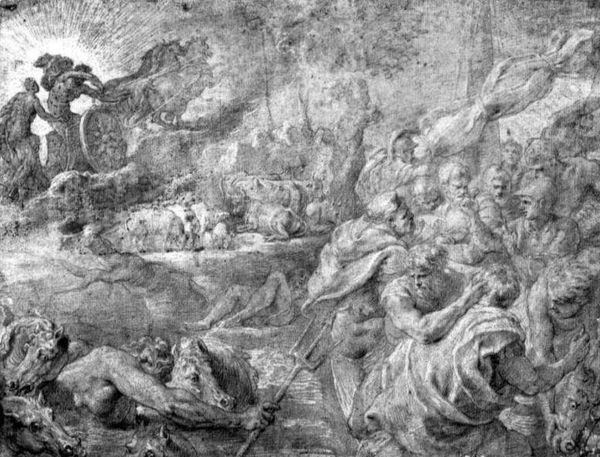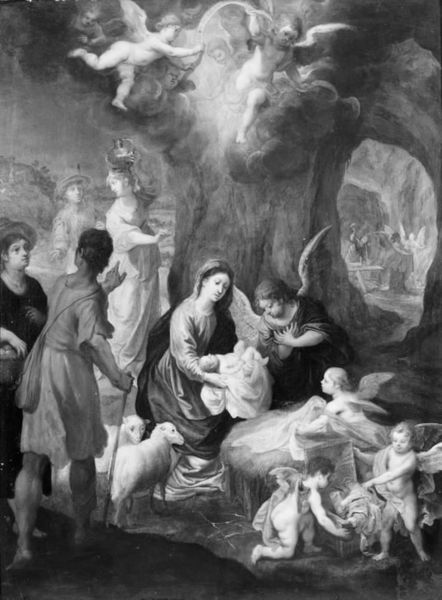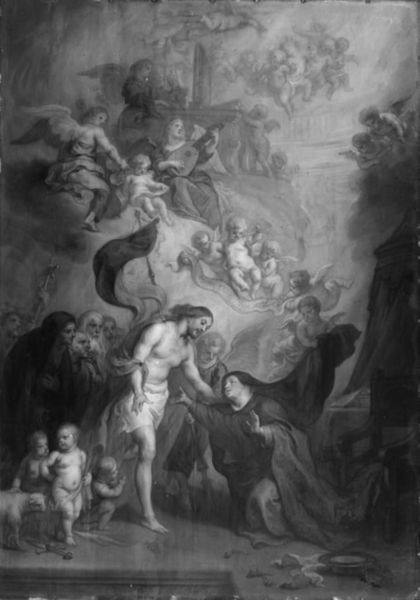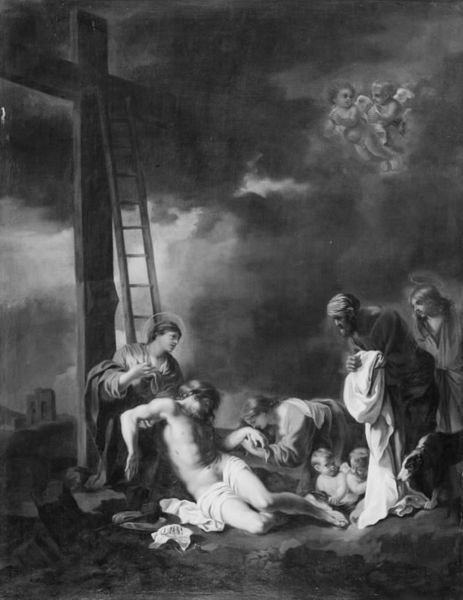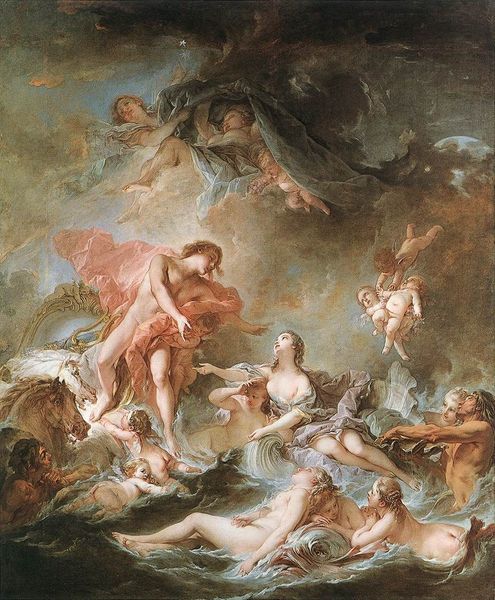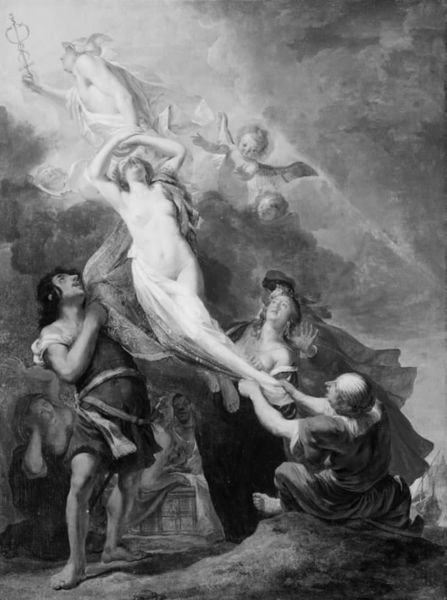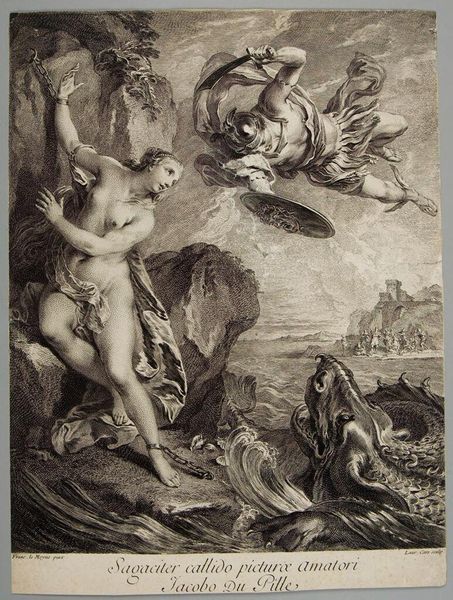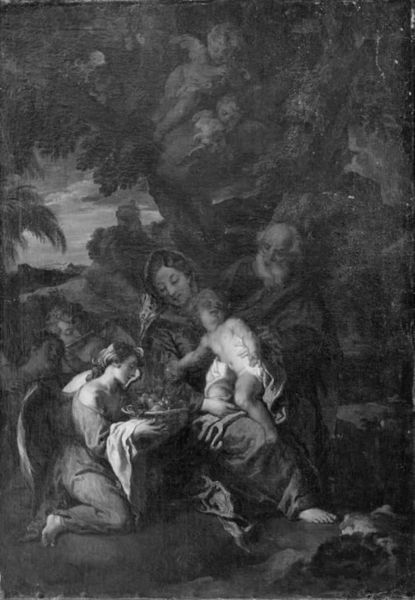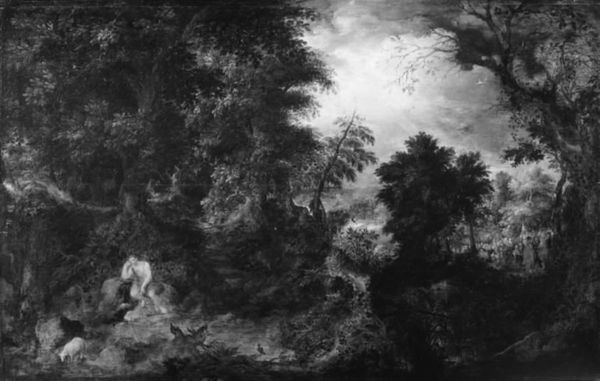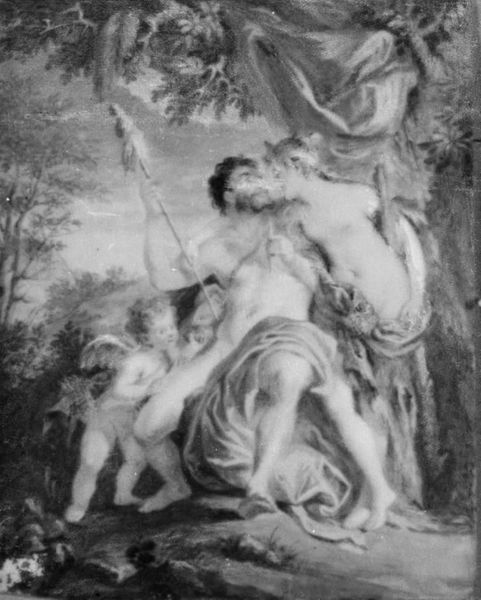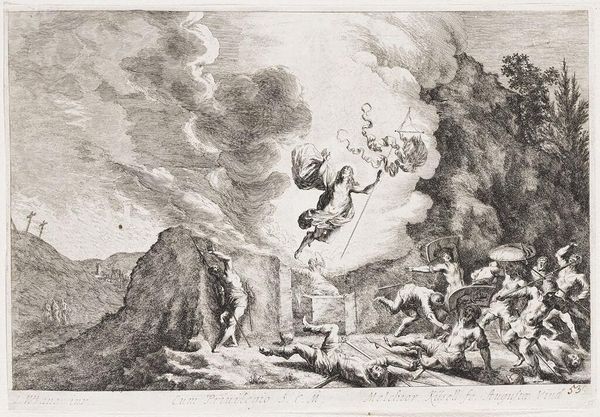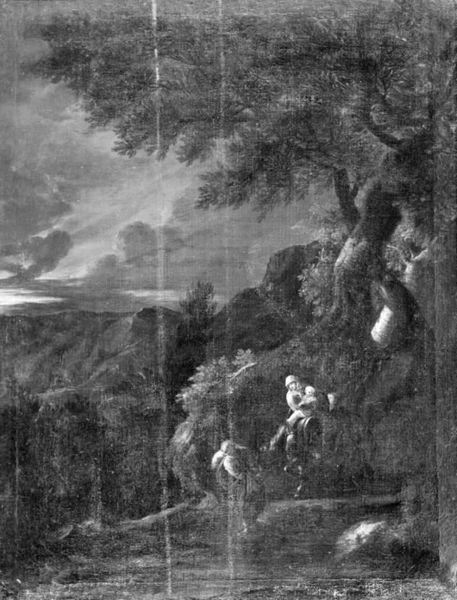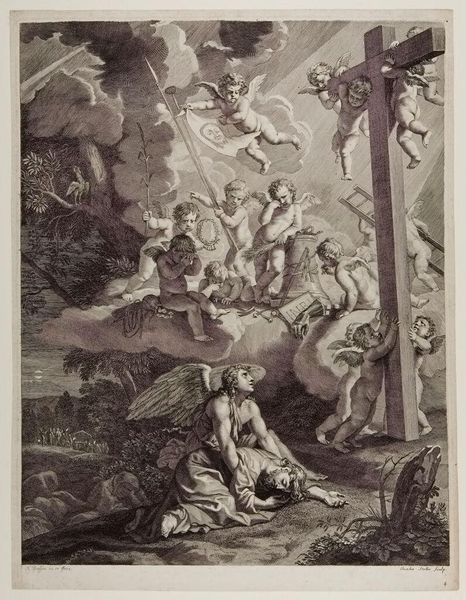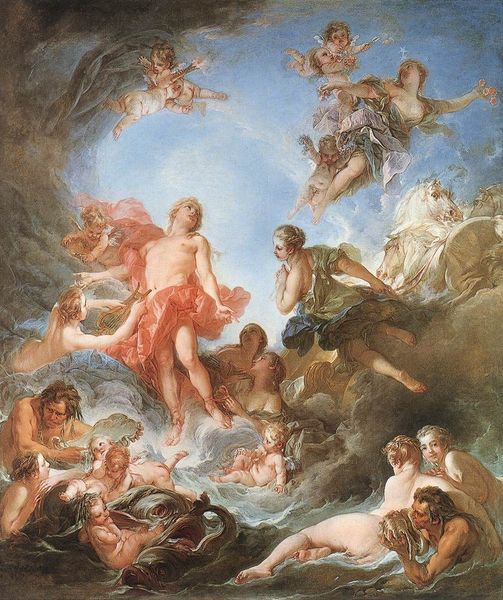
An Allegory with Bacchus, Ceres, Flora and Apollo 1679 - 1738
0:00
0:00
painting, oil-paint
#
allegory
#
baroque
#
painting
#
oil-paint
#
figuration
#
history-painting
Dimensions: 60 cm (height) x 81 cm (width) (Netto)
Editor: This is "An Allegory with Bacchus, Ceres, Flora and Apollo" by Alessandro Marchesini, painted sometime between 1679 and 1738, in oil on canvas. There is such a feeling of abundance in this work – and yet, it feels strangely ordered. What do you see in this painting? Curator: What strikes me is the carefully constructed symbolism. The assembly of Bacchus, Ceres, Flora, and Apollo is not simply a decorative gathering. It is a calculated layering of symbols related to prosperity and the arts. The artists aims at cultural memory. We read the allegory, linking abundance to not just the gods but an idea of divinely-sanctioned societal health. How does the composition speak to you? Editor: I notice how the figures aren’t static; everything seems to spiral upwards towards that divine light above. And I hadn’t quite connected it to the societal context, more like the circle of life in nature itself. Curator: Exactly. Now, look closer. Beyond the individual figures, what other symbolic elements are in play? Consider what these recurring images or patterns may reveal about shared beliefs. It's also key to remember this piece resides in the Statens Museum for Kunst today - a later viewing audience alters its effect and emotional affect. Editor: The overflowing cornucopias, the lush foliage...it all points towards an ideal of unending plenty. Thank you; looking at it that way makes the message so much more profound! Curator: My pleasure. Thinking about artwork as historical artifacts that also carry emotive meaning over time lets us consider the cultural narratives from various perspectives.
Comments
No comments
Be the first to comment and join the conversation on the ultimate creative platform.
